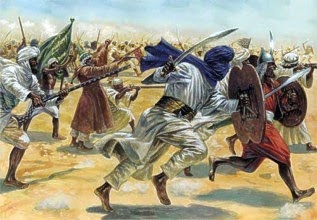Electricity sector in Pakistan
source = wikipedia
Electricity in Pakistan is distributed, and retail supplied by two vertically integrated public sector utilities: (WAPDA) for all of Pakistan , and the (KESC) for the city of Karachi and its surrounding areas. There are around 20 independent power producers that contribute significantly in electricity generation in Pakistan.
Electricity in Pakistan is distributed, and retail supplied by two vertically integrated public sector utilities: (WAPDA) for all of Pakistan , and the (KESC) for the city of Karachi and its surrounding areas. There are around 20 independent power producers that contribute significantly in electricity generation in Pakistan.
There are four major power producers in country: WAPDA (Water & Power Development Authority), KESC (Karachi Electric Supply Company), IPPs (Independent Power Producers) and PAEC (Pakistan Atomic Energy Commission).
- Electricity – total installed capacity: 22,797 MW (2014)
- Electricity – Sources (2014)
- fossil fuel – 14,635 MW – 64.2% of total(oil-35.2% + gas-29%)
- hydro – 6,611 MW – 29% of total
- nuclear – 1,322 MW – 5.8% of total
- average demand-17,000 MW
- shortfall-between 4,000 MW and 5,000 MW
WAPDA Hydel
- Tarbela 3478 MW
- Mangla 1000 MW
- Ghazi – Barotha 1450 MW
- Warsak 243 MW
- Chashma 184 MW
- Dargai 20 MW
- Rasul 22 MW
- Shadi-Waal 18 MW
- Nandi pur 14 MW
- Kurram Garhi 4 MW
- Renala 1 MW
- Chitral 1 MW
- Jagran (AK) 30 MW
- Khankhwar 72 MW
- AllaiKhwar 121 MW
- Gomal Zam Dam 17 MW
- Jabban 22 MW
- Duber Khwar Dam 130 MW
- Total Hydel 6,823 MW
WAPDA’s total hydel and thermal capacity is 11,272 MW. Hydel electricity generated by WAPDA varies between two extremities, i.e., between minimum of 2,414 MW and maximum of 6,761 MW depending upon the river flow.
KESC total generation capacity is 1756 MW.
Total generation capacity of Independent Power Producers (IPPs) is 7070 MW.
Pakistan Atomic Energy Commission
- KANUPP 137 MW
- CHASNUPP-1 325 MW
- CHASNUPP-2 340 MW
- KHUSHAB 50 MW
Total electricity generated from PAEC is 852 MW
The total power generation capacity of Pakistan is 21,143 MW and the electricity demand (as of April 2010) is 14,500 MW and PEPCO is merely generating 10,000 MW.
Pakistan's main concern in future to come would be to eradicate the line loss and the supply theft otherwise just increasing generation would have no impact on middle class, lower middle class or poor the impact will all the way around increase the electricity deficit and the line losses will be taken from us to meet the expenses of generation, moreover, will be said humbly by the gov that " ye karwa ghunt hm sabko lena parhega". The matter is not the generation but the importance of stooping the theft mafia. it'll save the money and will surely end up being generation of further electricity.



com.jpg)



Comments
Post a Comment